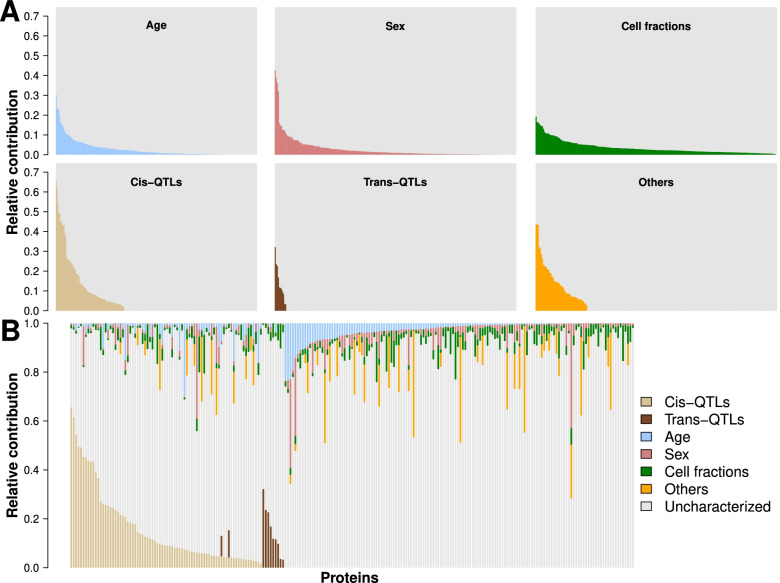Fig. 1.
Contribution of environmental and genetic factors to the variability of plasma protein levels. The variability explained by the associated genetic and non-genetic factors in the levels of 229 plasma protein levels, taken independently (A) or altogether (B). Each vertical bar represents the total variability of a protein, with the contribution of the considered (colored) or other and unknown (gray) factors summing up to 1. Age (blue), sex (brick-red), cis (light brown), and trans (dark brown) pQTLs correspond directly to the assessed relative importance, the cell fraction category (green) represents the cumulated relative importance of lymphocytes, leukocytes, neutrophils, eosinophils, basophils, monocytes, and platelets, and the “Others” category (orange) represent the sum of the relative importance all other non-represented variables. In A, the gray area represents 1 minus the sum of all non-considered and unknown factors. In B, the “Uncharacterized” category was computed as 1 minus the sum of all other variables or groups of variables

